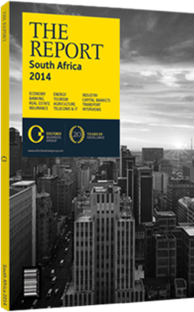OBG talks to Gareth Ackerman, Chairman, Pick n Pay

Interview: Gareth Ackerman
To what extent have inflationary pressures impacted household consumption rates?
GARETH ACKERMAN: Inflation and rising personal debt levels are two major factors that have adversely impacted consumer expenditure. A weakened rand has led to rising electricity, fuel and food costs that have, to a certain extent, eroded discretionary spending in the retail sector. However, the issues around inflation are complex and affect the various segments of society in different ways. At the top end of the market, because there is such a high import component in what people are purchasing, inflation is a lot greater than at the lower end.
South Africa is also one of the few countries in the world that doesn’t really have a controlled pricing structure for primary agricultural products. Apart from a few anti-dumping measures in place, the bulk of soft commodity pricing in the country is market-driven, based on US dollar prices. So as the rand-dollar exchange rate fluctuates, the price of commodities can increase. The key determinant in the price of food in South Africa is the maize crop, as 80% of all our food is either directly or indirectly impacted by maize and soya prices.
The second issue impacting consumer expenditure is concern about debt repayments. Following the boom in unsecured lending between 2010 and 2012, which led to an uptick in retail growth, the granting of credit has slowed down, with consumers being stretched by their repayment obligations. Until energy inflation is tempered and household indebtedness is reduced, consumers will remain under pressure. If the GDP growth rate can rise to around 4-5% per year, it will spur job creation and then I believe consumption will improve.
What sort of scope is there for increasing the role of e-commerce in South Africa?
ACKERMAN: There is huge scope for e-commerce in South Africa, particularly in value-added type services. We are seeing exponential growth in home delivery at the top end of the income spectrum, but the challenge remains at the lower end. The convergence of retail, telecommunications and financial services provides potential for growth in e-commerce in poorer areas but it will ultimately come down to the affordability of data.
Among the general emerging market trends is technology skipping generations. The continent has essentially skipped the phone and personal computer era and has gone straight to cell phones and smartphones. In terms of products, e-commerce is increasingly turning towards mobile money transfers. One of the biggest drawbacks to growth in e-commerce has been bank charges. Mobile money services, such as the recent partnership between Pick n Pay and MTN, look to bypass the banking system, and in the future these arrangements could facilitate cross-border money transfers.
How is retail activity evolving in rural areas?
ACKERMAN: We are seeing the emergence of a few trends in retail activity in rural areas. First of all, more formalised retailers are moving into more emerging areas. Secondly, the cash and carry industry is in decline, to the point where there has been consolidation into one major group, Massmart, with some strong independent, mostly family-run, wholesalers still remaining.
Above all we’ve seen the squeezing of informal shops. However, the spazas are not being squeezed by formal retailers, but rather by new entrants into the market, who are opening stores at a rapid rate, with vertically-integrated supply chains. Lastly, urbanisation has led to the establishment of retail developments in areas outside central business districts.
What developments are required to improve the efficiency of supply chain operations?
ACKERMAN: South Africa’s largest retailers have adopted central distribution centres in order to improve the efficiency of their logistics. This is not necessarily the whole solution, however, as the transport infrastructure in the country is quite good. The key is integrating suppliers with distribution centres to lower costs, so that suppliers don’t have to go to all the smaller stores.
You have reached the limit of premium articles you can view for free.
Choose from the options below to purchase print or digital editions of our Reports. You can also purchase a website subscription giving you unlimited access to all of our Reports online for 12 months.
If you have already purchased this Report or have a website subscription, please login to continue.

